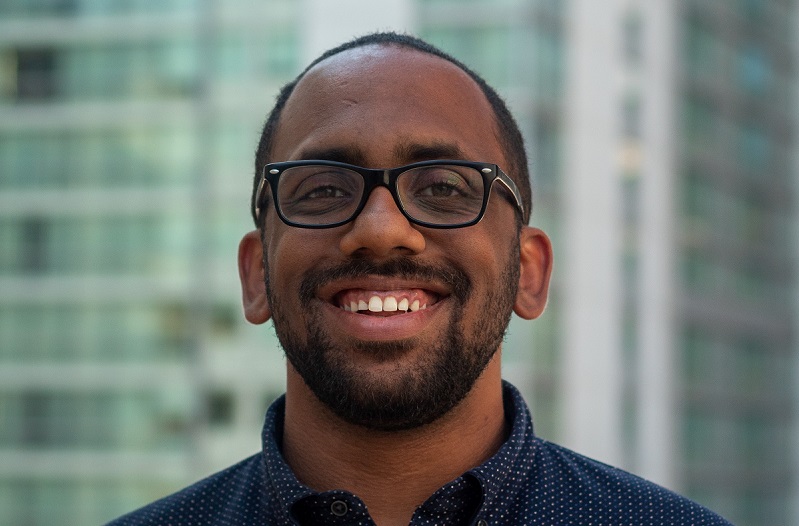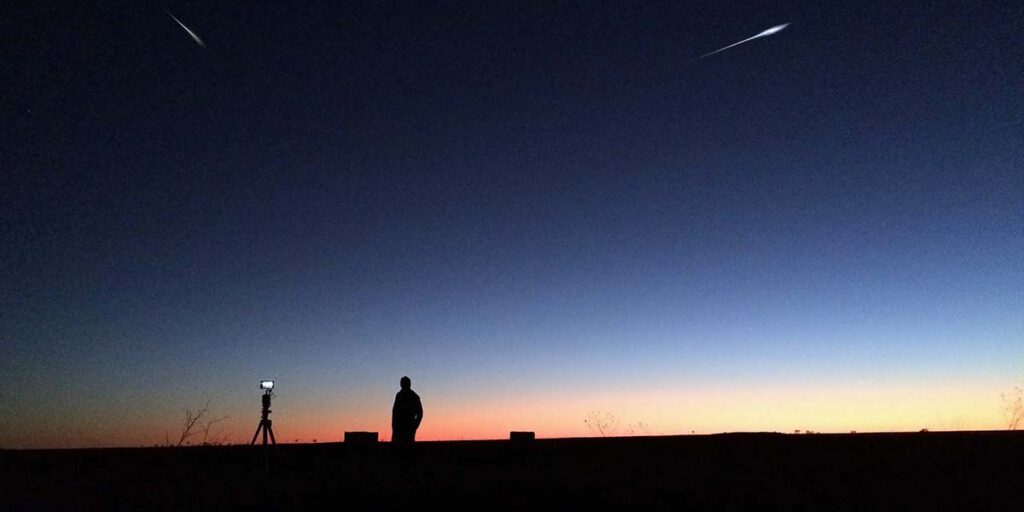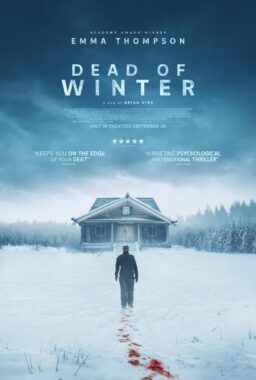For the first time since “Into the Inferno,” Werner Herzog reteams with volcanologist and now co-director Clive Oppenheimer for the documentary “Fireball: Visitors from Darker Worlds.” He returns with the most 2020 subject matter possible—killer asteroids—and globe-trots from Chelyabinsk, Siberia to remote islands in the Torres Strait for an anthropological survey of how meteorites have affected not only the landscape around us, but our cultural and religious habits.
As is usually the case, Herzog’s shady sense of humor colors his narration. But something feels off. The documentarian sounds less committed to his acerbic barbs. For instance, when visiting Chicxulub, he calls the beach resort “so God forsaken you want to cry,” and soon follows that up by spouting, “the dogs here, like all dogs on this planet, are just too dimwitted to understand that three-quarters of all species were extinguished by the event that took place right here.” While funny, there’s an air of Herzog playing to audience expectations. People want Herzog to Herzog in all of his deadpan glory.
“Darker Worlds” further suffers from a general malaise. Though Herzog, at several points, announces his decision to cut some scientists short—one segment involves an involved explanation of quasicrystals—Herzog still strains to keep the anthropological discussions from dominating the pacing. Even so, many of the scientists, whose expertise range from geochemist to cave archeologist, are just plain giddy. And Herzog and Oppenheimer revel in their excitement because “Darker Worlds” allows these important scientific fields to shine. Even the filmmaker’s steady companion, cinematographer Peter Zeitlinger, provides awe-inspiring photography of gorgeous crystals and aerial shots of these massive craters. “Dark Worlds” is always best when it feels personal to all involved.
As the documentary progresses, Herzog moves slowly from spotlighting science to parsing through religion. During one segment, he visits Kukulcan Pyramid in Chichén Itzá to talk about the Mayan’s fascination with death. In another, he lyrically captures, with the splash of a solemn choir, a Día de Muertos ceremony. Though the filmmaker balances these expeditions with lighthearted clips of “Last Day of the Dinosaurs” and “Deep Impact,” when he surveys NASA’s Planetary Defense Coordination Office about extinction-level events, the mood becomes distinctly nihilistic. Herzog is as interested in the end of things as any Mayan, and while “Darker Worlds” can feel coldly distant, the capturing of a once-in-a-lifetime solemn dance allows for a poetic ending that softens Herzog’s autumnal musings.

Sonia Kennebeck’s hefty documentary “Enemies of the State” is more than your batty true crime mystery. In 2009, the FBI accused Matt Dehart of possessing child pornography and soliciting minors for sex on the internet. But when confronted with the allegations, the hacker accused the government of framing him due to his involvement with Wikileaks and Anonymous. His father Paul and his mother Leann—both former linguists in the US military—came to believe their son, and the chain that follows, twisting from Mexico to Canada and then to the remote woods of Kentucky, becomes more unbelievable with each revelation.
“Enemies of the State” nestles itself in the area between logical deductions and crazed conspiracy theories by pitching two narratives against each other: Matt is either a pedophile or a martyr to espionage. And no matter how analytical one tries to be about Kennebeck’s investigations—which involve a missing USB drive purportedly containing classified information, a theory involving anthrax, and another concerning the son of a mobster—the viewer is sucked into connecting dots that may not exist.
For example, after Paul drives Matt to the Russian embassy to defect, he’s surprised to see the authorities come down on his son even harder. The mystery becomes: Is the government after Matt because they think he’s a traitor or because they have something to hide? Whenever the chain of events link a clear cause and effect, or the Deharts’ arguments feel too outlandish, details emerge from declassified records to verify their story. Kennebeck’s staging smartly lends further authority to the Deharts. For reenactments, she convinced the family to re-stage their Canadian Refugee Hearing by having them mimic their testimony from original proceedings. We know the tapes are real, so as the audience, we begin to thrust the same trust to the Deharts.
Sometimes “Enemies of the State” is too on the nose, such as a contrived game of Scrabble, but the complicated disclosures that follow keep such visuals grounded. By the end, professors, reporters, friends, and lawyers are all equally confused as to the veracity of Matt’s story. The only people who seem sure of their reality are the Deharts and the FBI. And even when the pieces do begin to fall in place, Kennebeck’s “Enemies of the State” knows exactly how conspiracy theories can become truths. She uses our natural addiction to turn ambiguous clues into larger narratives for a shocking documentary that’s amazing at every turn.

Ever since this never-ending pandemic began, I’ve wondered how filmmakers might record these events for posterity. From the outset, Wuhan, China served as the focal point for Covid-19. There, on January 23, the Chinese government instituted a lockdown on the 11 million person population that lasted for over two months. In their devastating documentary “76 Days,” directors Hao Wu and Weixi Chen—with the help of an anonymous filmmaker—capture the fear, heartbreak, and resilience the city showed during their quarantine.
Shot guerilla style in four separate hospitals, the filmmakers took enormous risk to get cinema vérité footage that’s at once honest and captivating. During the meandering run time, doctors adorned from head-to-toe in protective gear keep worried patients at bay. In fact, the doc’s first images—which feature health care professionals holding the front door shut against the tide of people seeking treatment—date back to the infancy of the lockdown. In another moment, they comfort a woman relegated to watching her mother die alone. With few answers, and running dangerously low on beds and supplies, they’re on the frontlines, acting as physicians, therapists, and grief counselors amid the tumult.
But as the weeks progress from those first hairy days—when the only vehicles driving outside in the post-apocalyptic environment were ambulances—a sense of patriotism drives physicians and patients alike. For example, public announcements by the government plead for citizens to not only stay home, but challenge the populace to spiritually unite in their endeavor to beat the virus. Multiple patients thank the doctors for fighting on the frontline. As one man explains, “You are fearless soldiers.”
But even with these words of encouragement, heartbreak pervades “76 Days.” Pictures of a lifeless hand peeking from under a bed sheet, or a woman rapidly declining from alertness one moment to a coma another, make the gravity of those early days all too real. In one scene, a doctor shows the phones collected from the patients, and then one vibrates to the tune of thirty-seven unread messages meant for a now-dead woman. The few moments of levity come by way of the doctors drawing flowers on their hazmat suits, or a grandpa working to escape from the hospital. But the respites from the harrowing scene are rarely well-placed, and other than the grandpa, “76 Days” frustratingly whiffs at discovering a set of indelible subjects.
Still, even with its weaknesses, one can’t ignore the life or death struggle inherent in every shot, or the great bravery necessary to not only acquire such footage, but for the doctors to show up to work every single day. While some moments find them catching sleep on the hospital’s hallway benches, every other second finds them fighting to save every single life. “76 Days” is not just the first major recounting of the tragedy wrought by this virus, it’s also an inspiring profile of doctors practicing courage under fire.












